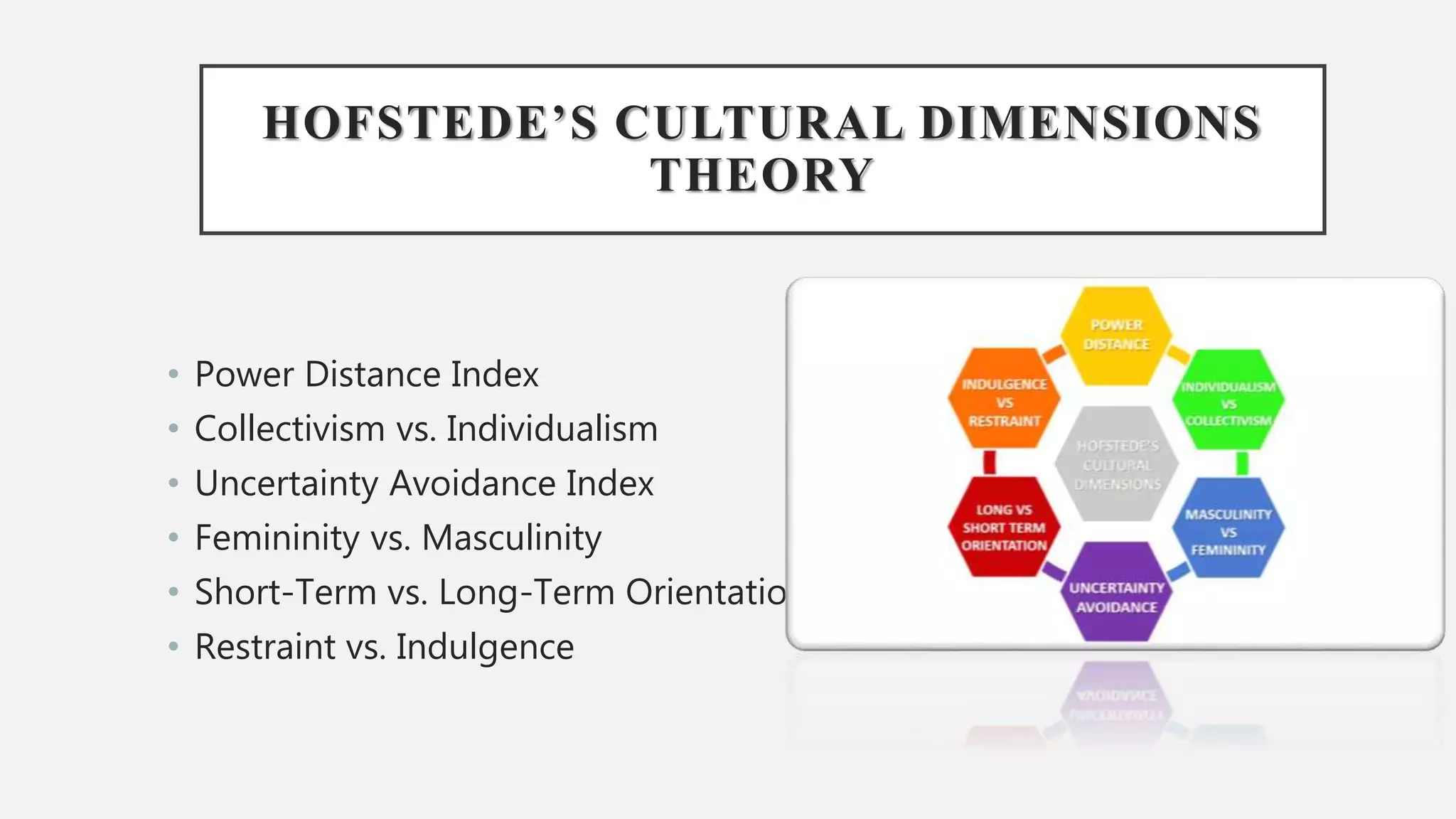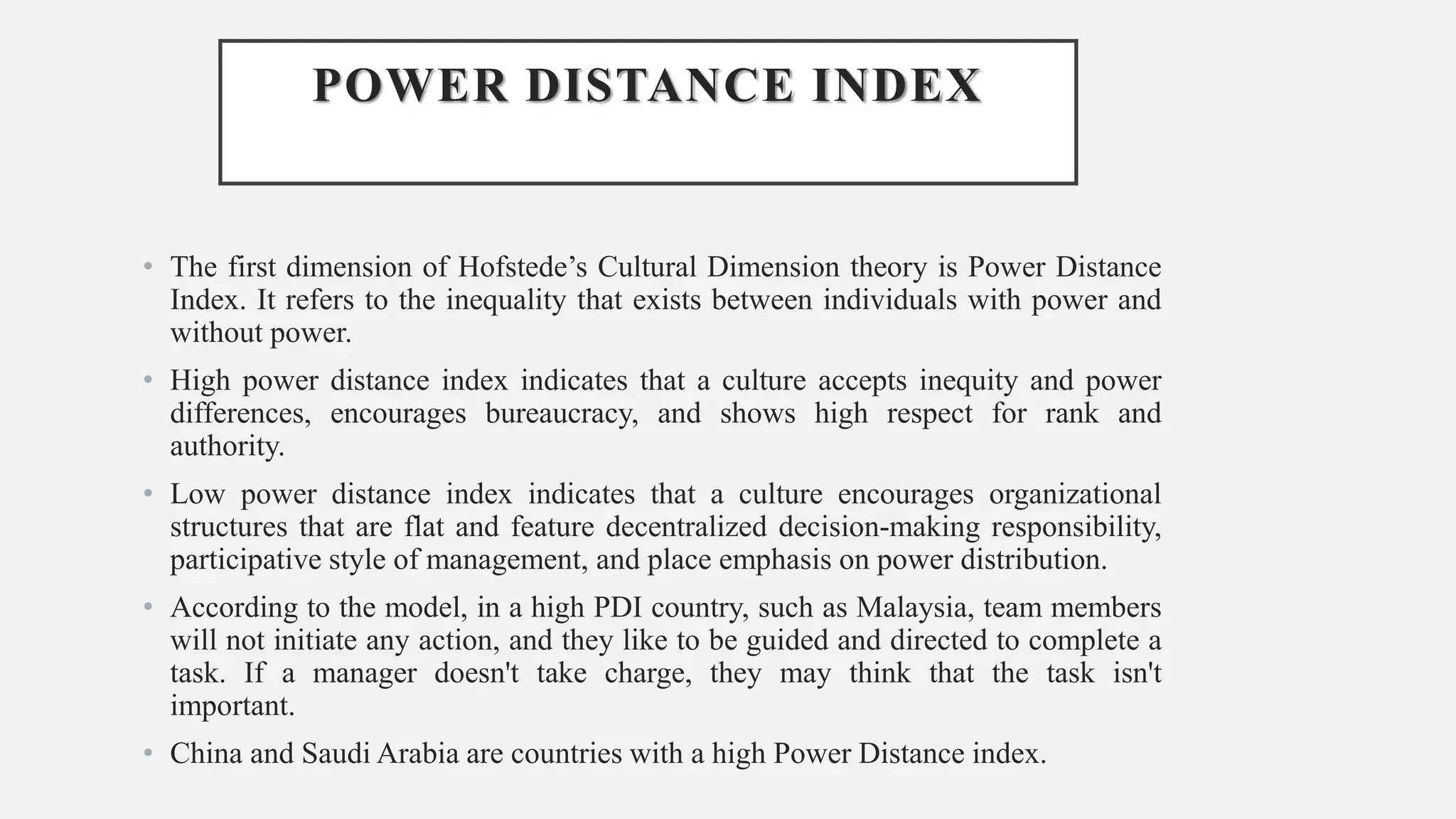Hofstede's cultural dimensions theory, created by Geert Hofstede, is a framework for understanding cultural differences across countries, consisting of six dimensions: power distance index, individualism vs. collectivism, uncertainty avoidance index, masculinity vs. femininity, short-term vs. long-term orientation, and indulgence vs. restraint. The model facilitates insights into how these cultural dimensions impact behaviors in various business and social contexts. It is widely used in fields like cross-cultural communication and international management to help individuals appreciate and navigate foreign cultures.










